Mushrooms in your lawn? Learn about common types, what they indicate about your soil and what to do about them.
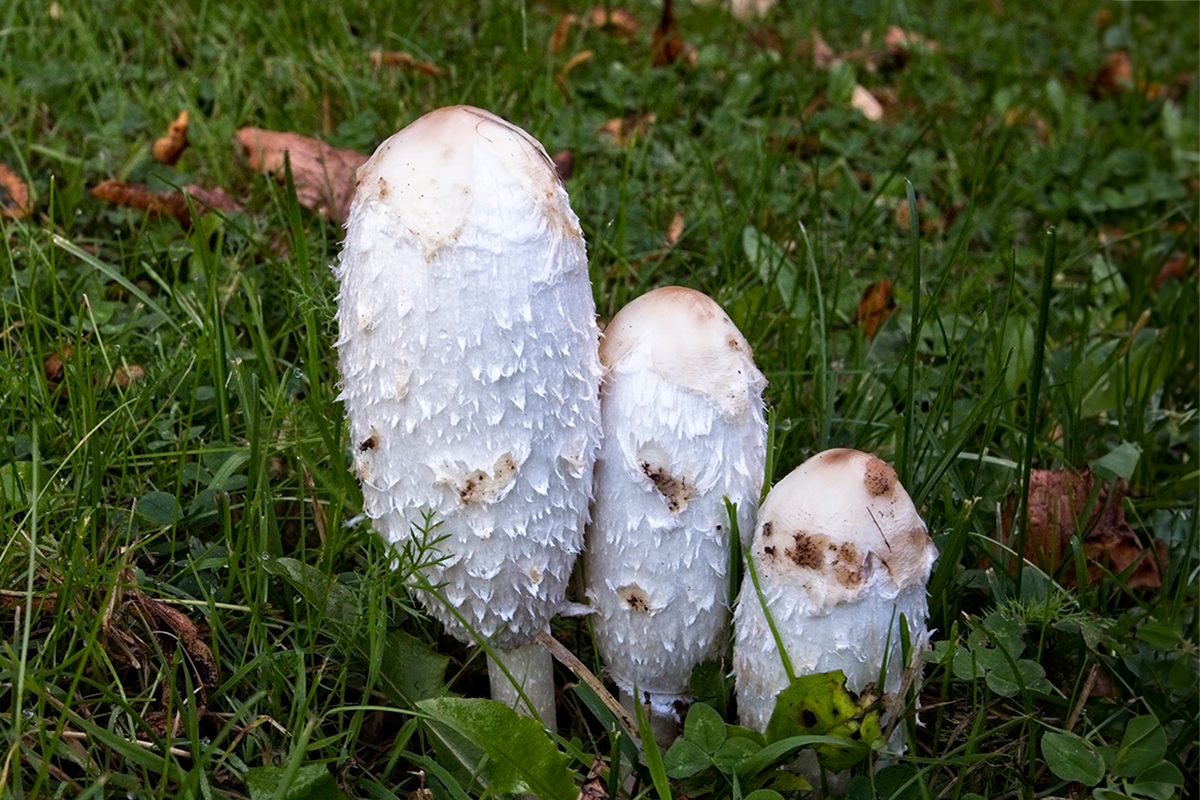
10 Mushrooms Growing In Your Grass and What It Means

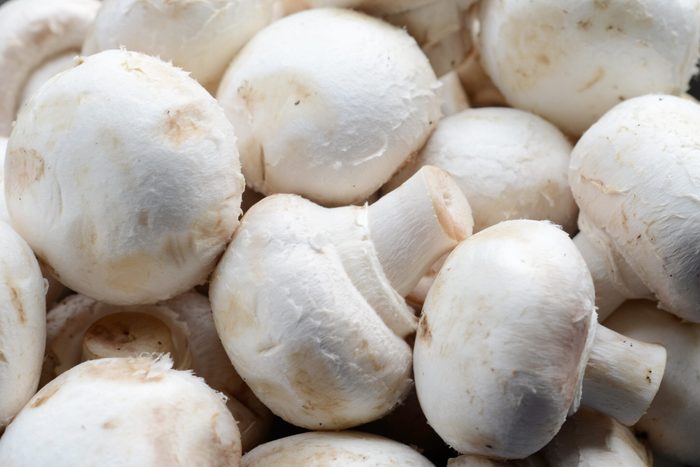
Button Mushroom (Agaricus bisporus)
Button Mushrooms, one of the most cultivated mushrooms globally, are prized for their taste and versatility. You’ll typically find them in stores with a smooth, grayish-white cap and short, sturdy stem. If left to mature in your lawn, the cap expands and develops small scales.
“Agaricus loves moisture, so it may pop up in your lawn after a big rain,” Bashian-Victoroff says. “These decomposer fungi are a critical part of a healthy soil environment, likely a sign that your soil is healthy and full of life!”
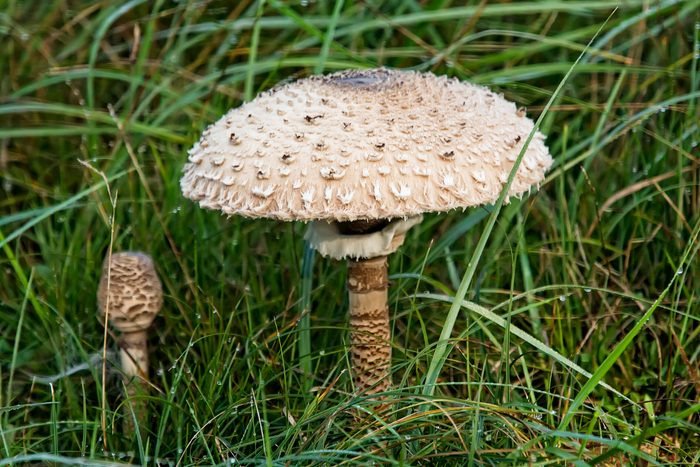
Parasol Mushroom (Macrolepiota procera)
Parasol Mushrooms have a flat, scaly and broad cap that can grow three to 10 inches wide. If left to mature, Parasol Mushrooms can grow three to 12 inches tall with a brown, rough-textured stem.
These mushrooms are edible but can easily be mistaken for poisonous specimens. You may find these growing under trees in shady, moist areas of your lawn, and they are the fruiting bodies of a fungus in the soil.

Ringless Honey Mushrooms (Armillaria tabascens)
Golden-brown Ringless Honey Mushrooms often grow at the base of trees infected with Armillaria fungus, and often form clusters of one to two feet. “Each individual mushroom within the cluster is typically rather small, with caps ranging from about two to five centimeters across and stems about three to five centimeters tall,” Bashian-Victoroff says. They may also sprout on decaying tree roots in your lawn.
Although they only live for about a week, to remove, “cut or pry the stems up, place the mushrooms into a non-porous bag and then into the trash,” Bashian-Victoroff adds.
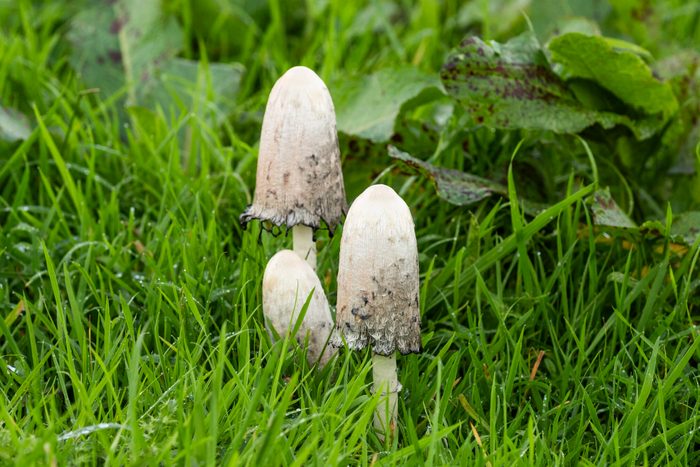
Shaggy Ink Cap (Coprinus comatus)
When immature, Shaggy Ink Caps (or Lawyers’ Wigs) have tall, grayish-white caps that resemble a bullet, with upturned scales and a smooth stem. Often found in lawns, these mushrooms only live about 24 hours. Once past maturity, Shaggy Ink Caps transform into a black ink-like substance full of spores.
“While these fungi are a good sign of healthy soil, they may leave behind an inky liquid in your grass. If you would like to avoid this (which some might find unsightly), be sure to remove the mushrooms while they are still immature before they start to deliquesce,” Bashian-Victoroff says.
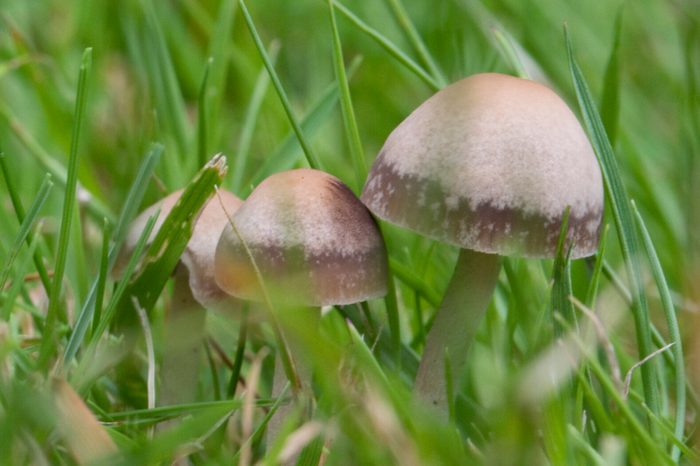
Lawnmower’s Mushroom (Panaeolus foenisecci)
Also known as the Haymakers Mushroom, you’ve most likely seen this small, brown mushroom in your lawn at some point. Prolific in yards across North America, Lawnmower’s Mushrooms often grow in clumps in grass. Depending on its stage of maturity, the cap will be conical or bell-shaped when young and flat when mature, with a short, smooth stem. If ingested, these can cause gastrointestinal upset.
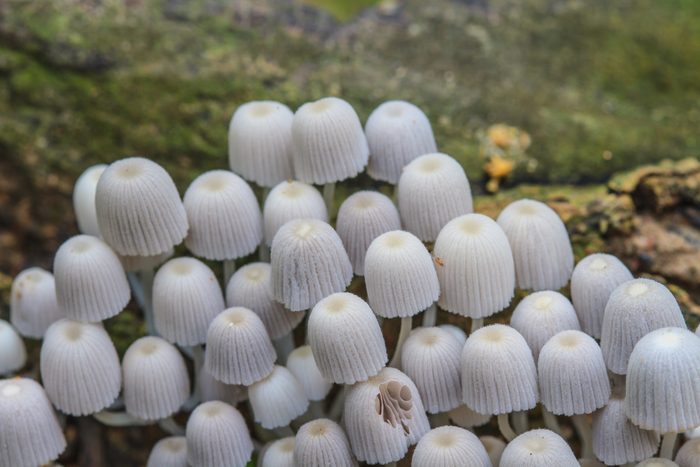
Fairy Bonnet (Coprinellus dissemanetus)
Fairy Bonnets, typically found in forests growing on rotting logs, can also appear in grass— but only if there’s decaying wood present. If your lawn has rotting tree roots or stumps, these mushrooms are likely to show up. Easily identified by their delicate gray caps, Fairy Bonnets often grow in tight, prolific clusters. They’re short-lived and delicate but will likely continue to proliferate unless areas of rotting wood are removed from the lawn. They are not poisonous.

White Dunce Cap (Conocybe lactea)
This small, white mushroom often pops up in lawns after a rainfall. They are very delicate and shrivel up and disappear by afternoon during hot, sunny weather. “White Dunce Caps aren’t harmful to grass, but they can indicate that your lawn is damp or has a high level of decaying organic material,” Corbett says. “If you’re concerned, improve drainage and reduce excess organic matter to help manage their growth.” This mushroom is not edible and can be harmful to pets if ingested.
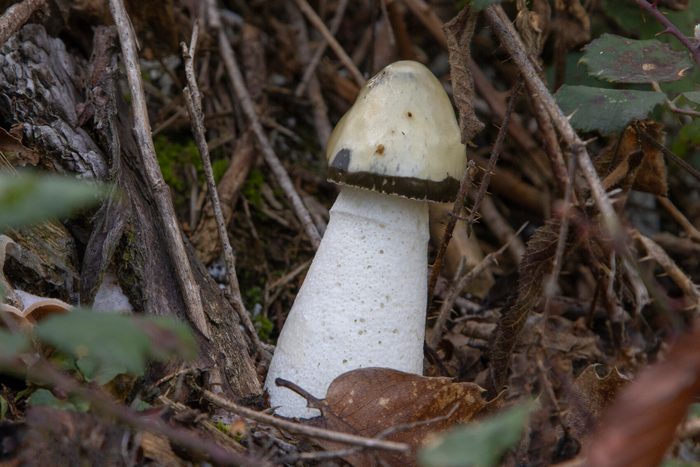
Stinkhorn (Phallus impudicus)
True to their name, Stinkhorn Mushrooms emit a pungent odor that is unmistakable once you’re familiar with it. “You’ll usually smell a stinkhorn before you see it,” Corbett says. “They have a nasty, foul smell that’s hard to miss.” They also have a distinct appearance, with a tall, phallic-shaped fruiting that often grows in gardens, mulch beds and leaf piles. Stinkhorns do not last for long, usually dying off in a day or two. They are not edible, and can be poisonous to dogs.
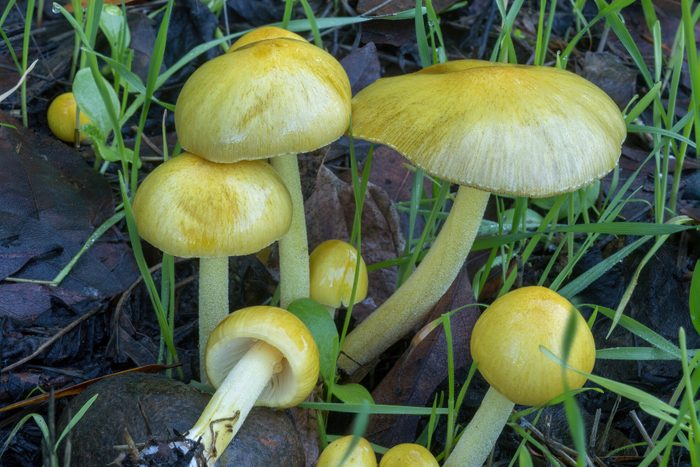
Yellow Fieldcaps (Bolbitius titubans)
Widespread throughout North America, Yellow Fieldcaps are named for their bright yellow caps during their initial growth phase. Very short-lived, these mushrooms only last a day or two, quickly morphing from yellow, bulbous caps to flat, gray caps. Yellow Fieldcaps thrive in well-fertilized lawns or compost piles, so their presence in grass suggests healthy soil with lots of nutrients and organic material. They are not considered poisonous.
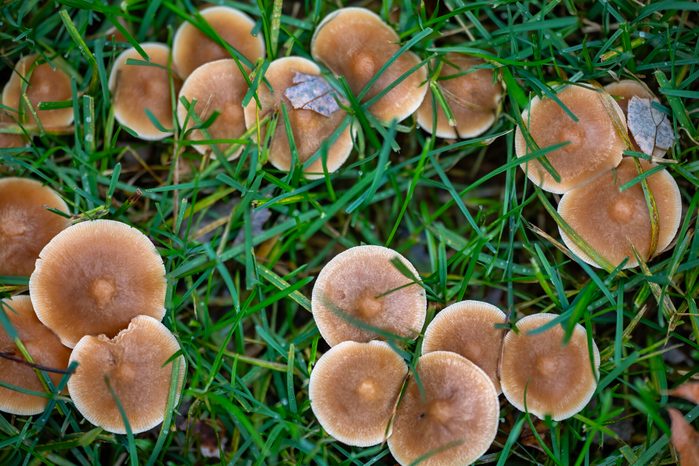
Fairy Ring Mushroom (Marasmius oreades)
While visible above ground, Fairy Ring Mushrooms are actually an offshoot of a fungus living underground. Commonly found growing in a circle on lawns with a beige, bell-shaped cap and smooth stem, Fairy Ring Mushrooms are edible and generally harmless to lawns. Consider adding a balanced lawn fertilizer to quickly remove their presence from your grass if you choose.
About the Experts
- Claudia Bashian-Victoroff is a fungal ecologist and research specialist at Holden Arboretum in Kirtland, Ohio. Bashian-Victoroff holds a Master of Science degree in Forest Pathology and Mycology from SUNY College of Environmental Science and Forestry.
- Joyce Corbett owns Classic Courtyards in West Springfield, Massachusetts. She has over forty years of landscaping design and installation experience.


















